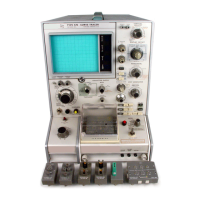Add a general-purpose instrument
You can add a general-purpose instrument to your system configuration if your application requires
an unsupported external instrument. See Supported external equipment (on page 3-6) for a list of
supported instruments.
When you select a General Purpose Test Instrument in the System Configuration list, its properties
and connections are displayed. The properties for a 2-terminal general-purpose instrument are shown
in the following figure.
Figure 20: General Purpose Instrument 2-Terminal Properties and Connections
A two-terminal general-purpose instrument is an unsupported external instrument with two terminals
(HI and LO), such as a current source. Generally, the instrument HI and LO terminals transmit or
receive the instrument stimulus signals.
A four-terminal general-purpose instrument is an unsupported external instrument with four terminals
(HI, SENSE HI, LO, and SENSE LO), such as a digital multimeter. Generally, the instrument HI and
LO terminals transmit or receive the instrument stimulus signals. The instrument SENSE HI and
SENSE LO terminals typically measure the device under test (DUT) response to the instrument
stimulus.
The SENSE HI and SENSE LO signals are automatically routed through separate (parallel) switch
matrix pathways when making connections between the general purpose instrument HI/LO terminals
and the test-system pins.
To control the operation of a GPIB or RS-232 general-purpose instrument in a Clarius project, create
a user library with KULT and use the LPT library I/O functions (kib* and ksp*) to communicate with
the general-purpose instrument. For more information, refer to Keithley User Library Tool.
As with any other instrument in the system configuration, general-purpose instrument terminals can
be automatically routed to test system pins using the ConnectPins user module in the Matrixulib
user library. For information, refer to “Using Switch Matrices” in Model 4200A-SCS Prober and
External Instrument Control.
To set the GPIB address, refer to Set GPIB addresses (on page 3-15).
